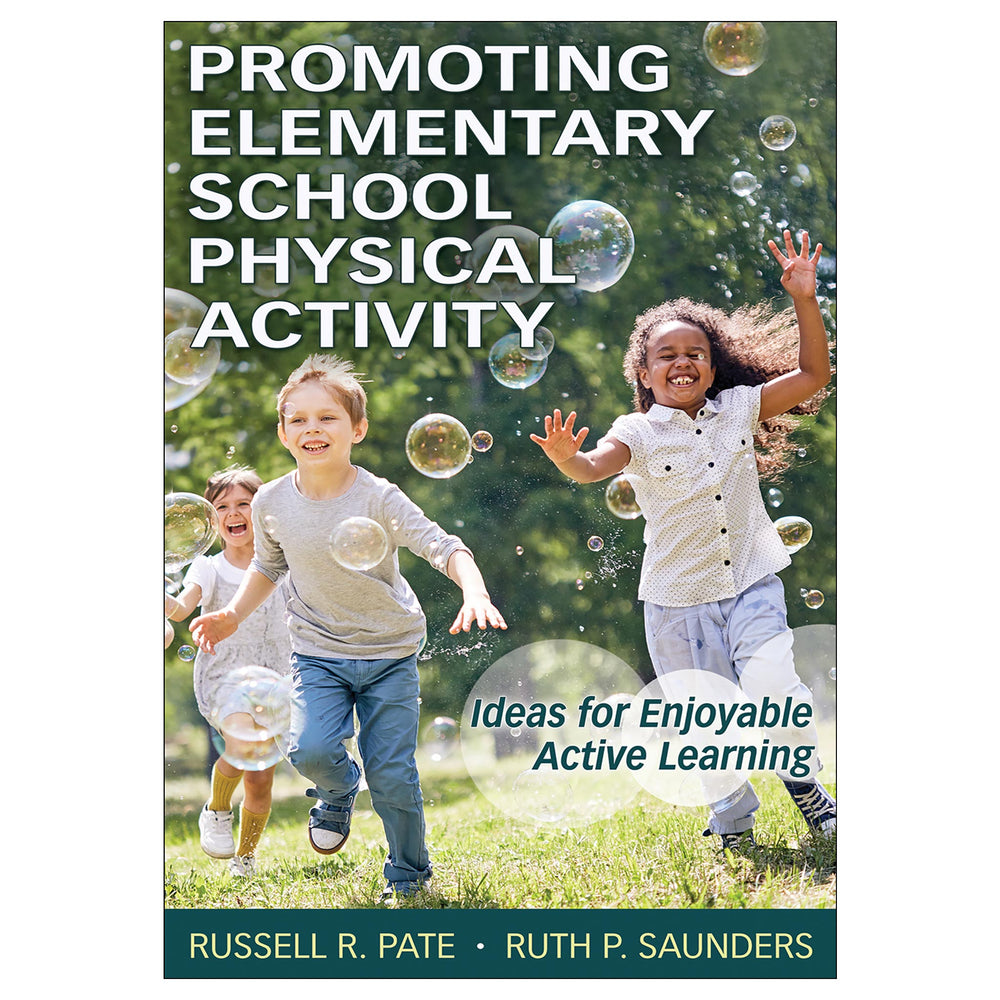Promoting Elementary School Physical Activity
Ideas for Enjoyable Active Learning
Author: Russell R. Pate, Ruth P. Saunders
$54.95 CAD
That’s where Promoting Elementary School Physical Activity: Ideas for Enjoyable Active Learning comes in.
This text provides K-5 classroom teachers and physical educators with simple, creative strategies and activities that have proven successful in schools and that are suitable for all children. The ideas are practical, accessible, and backed by research that supports the benefits of physical activity in the classroom. They are also flexible—meaning the authors present guidance and options for modifying activities, so teachers can choose what works best for their students. Most activities can be carried out in small spaces or within an existing classroom setup.
Promoting Elementary School Physical Activity offers a total of 50 ready-to-use activities in four categories:
- Classroom physical activity breaks
- Physically active instruction
- Recess
- Enhanced physical education
The games and activities afford schools the opportunity to emphasize physical activity throughout the day. The activities are easy to fit into the curriculum at any and all points, including before and after school. Little or no equipment is needed; for the few activities that require equipment, suggestions are provided to make simple equipment from everyday materials. In addition, most chapters offer quick tips to help teachers overcome any challenges that might come up with the activities in that section, and many chapters come with an infographic that shows or describes the benefits of the activity for the topic being discussed.
Promoting Elementary School Physical Activity is organized into three parts:
- Part I, Classroom Physical Activity, offers ideas for integrating classroom physical activity breaks, incorporating physical activity into academic instruction, taking advantage of recess, and creating a physically active classroom.
- Part II, Physical Education, is written specifically for the physical education teacher. It provides simple strategies for getting students moving throughout physical education class, connecting them to physical activity resources in the school and community, and facilitating lifelong physical activity.
- Part III, The Physically Active School, presents more options for student physical activity, including ideas for before- and after-school programs and physically active transport to and from school. It also focuses on the importance of the physical environment, physical activity policies, physical activity practices, and social environment. The comprehensive school physical activity program is explored as a tool to organize and coordinate the physical activity opportunities presented throughout this book.
Audience
Elementary school classroom teachers, elementary physical education teachers, and school district directors. Supplemental undergraduate text for physical education teaching courses.Chapter 1. Classroom Physical Activity Breaks
Learn more about classroom physical activity breaks, which are brief times for physical activity in the classroom between periods of instruction and before, during, or after transitions throughout the day.
Chapter 2. Physically Active Instruction
Learn more about physically active instruction, where the teacher incorporates bouts of physical activity into academic instruction.
Chapter 3. Recess
Learn more about recess, which is a regularly scheduled period within the school day for physical activity and play.
Chapter 4. The Physically Active Classroom
Learn more about physically active classrooms, which combine nontraditional arrangements of the space and student-centered learning to reduce barriers to physical activity in the classroom.
Part II. Physical Education
Chapter 5. Enhanced Physical Education
Learn more about enhanced physical education, which involves curricula and practice-based approaches that aim to increase the amount of time students engage in moderate to vigorous physical activity during physical education classes.
Chapter 6. Physical Education Beyond the Gymnasium
Learn more about physical education beyond the gymnasium, where the physical education teacher creates a positive, motivational climate that results in students wanting to be physically active, connects them to physical activity opportunities during out-of-school time, and communicates with families about physical activity.
Part III. The Physically Active School
Chapter 7. Physical Activity Before and After School
Learn more about physical activity programs that provide supervised opportunities for children to be physically active immediately before and after school.
Chapter 8. The Physically Active School Environment
Learn more about the four interacting parts of the physically active school environment: physical environment, social environment related to physical activity, physical activity policies, and physical activity practices.
Chapter 9. Comprehensive School Physical Activity Program
Learn more about the five components of a comprehensive school physical activity program: physical education, physical activity during school, physical activity before and after school, staff involvement, and family and community engagement.





